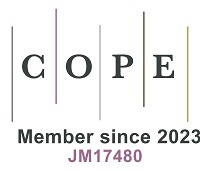REFERENCES
1. Yang, X. G.; Zhu, J. C.; Wang, Y. Z.; et al. Review of urban transportation system reconstruction and research in the transformation and development of automobiles. Transp. Res. 2022, 8, 2-20. (in Chinese).
2. Yang, X. G. Liu LW. Key issues and research progress of urban road traffic health checks. Chin. J. Highw. Transp. 2024, 37, 314-42. (in Chinese).
3. Liu, Y.; Feng, C. Decouple transport CO2 emissions from China’s economic expansion: a temporal-spatial analysis. Transp. Res. Part. D. Transp. Environ. 2020, 79, 102225.
4. Mishina, Y.; Muromachi, Y. Are potential reductions in CO2 emissions via hybrid electric vehicles actualized in real traffic? Transp. Res. Part. D. Transp. Environ. 2017, 50, 372-84.
5. Shang, W.; Chen, Y.; Yu, Q.; et al. Spatio-temporal analysis of carbon footprints for urban public transport systems based on smart card data. Appl. Energy. 2023, 352, 121859.
6. Shang, W.; Ling, Y.; Ochieng, W.; et al. Driving forces of CO2 emissions from the transport, storage and postal sectors: a pathway to achieving carbon neutrality. Appl. Energy. 2024, 365, 123226.
7. Zhong, H.; Chen, K.; Liu, C.; Zhu, M.; Ke, R. Models for predicting vehicle emissions: a comprehensive review. Sci. Total. Environ. 2024, 923, 171324.
8. Zhou, M.; Jin, H.; Wang, W. A review of vehicle fuel consumption models to evaluate eco-driving and eco-routing. Transp. Res. Part. D. Transp. Environ. 2016, 49, 203-18.
9. Grote, M.; Williams, I.; Preston, J.; Kemp, S. Including congestion effects in urban road traffic CO2 emissions modelling: do local government authorities have the right options? Transp. Res. Part. D. Transp. Environ. 2016, 43, 95-106.
10. Pati, D.; Lorusso, L. N. How to write a systematic review of the literature. Health. Environ. Res. Des. J. 2018, 11, 15-30.
11. Onan, A.; Korukoğlu, S.; Bulut, H. Ensemble of keyword extraction methods and classifiers in text classification. Expert. Syst. Appl. 2016, 57, 232-47.
12. Campos, R.; Mangaravite, V.; Pasquali, A.; Jorge, A.; Nunes, C.; Jatowt, A. YAKE! Keyword extraction from single documents using multiple local features. Inf. Sci. 2020, 509, 257-89.
13. Gilardi, F.; Alizadeh, M.; Kubli, M. ChatGPT outperforms crowd workers for text-annotation tasks. Proc. Natl. Acad. Sci. U. S. A. 2023, 120, e2305016120.
14. DeepSeek-AI,
15. Noroozi, M.; Moghaddam, H. R.; Shah, A.; et al. An AI-assisted systematic literature review of the impact of vehicle automation on energy consumption. IEEE. Trans. Intell. Veh. 2023, 8, 3572-92.
16. Moore, A. T.; Staley, S. R.; Poole, R. W. The role of VMT reduction in meeting climate change policy goals. Transp. Res. Part. A. Policy. Pract. 2010, 44, 565-74.
17. Matthaios, V. N.; Harrison, R. M.; Koutrakis, P.; Bloss, W. J. In-vehicle exposure to NO2 and PM2.5: a comprehensive assessment of controlling parameters and reduction strategies to minimise personal exposure. Sci. Total. Environ. 2023, 900, 165537.
18. Veratti, G.; Bigi, A.; Teggi, S.; Ghermandi, G. Description and validation of vehicular emissions from road traffic (VERT) 1.0, an R-based framework for estimating road transport emissions from traffic flows. Geosci. Model. Dev. 2024, 17, 6465-87.
19. Grote, M.; Williams, I.; Preston, J.; Kemp, S. A practical model for predicting road traffic carbon dioxide emissions using inductive loop detector data. Transp. Res. Part. D. Transp. Environ. 2018, 63, 809-25.
20. Logan, K. G.; Nelson, J. D.; Hastings, A. electric and hydrogen buses: shifting from conventionally fuelled cars in the UK. Transp. Res. Part. D. Transp. Environ. 2020, 85, 102350.
21. Zhang, Z.; Yu, Q.; Gao, K.; He, H.; Liu, Y.; Huang, H. Carbon emission reduction benefits of ride-hailing vehicle electrification considering energy structure. Appl. Energy. 2025, 377, 124548.
22. Jin, H.; Yang, X. G.; Teng, J.; Ma, W. J. Impact of traffic conditions on bus carbon emissions. Urban. Transp. China. 2015, 13, 66-71. (in Chinese).
23. Lyu, P.; Wang, P(Slade).; Liu, Y. Review of the studies on emission evaluation approaches for operating vehicles. J. Traffic. Transp. Eng. (Engl. Ed). 2021, 8, 493-509.
24. Shang, W.; Song, X.; Xiang, Q.; et al. The impact of deep reinforcement learning-based traffic signal control on emission reduction in urban road networks empowered by cooperative vehicle-infrastructure systems. Appl. Energy. 2025, 390, 125884.
25. Zhang, H.; Zhao, Z.; Guo, X.; Li, G.; Zhang, C.; Tang, L. Three-dimensional road network empowered traffic emission estimation via trajectory data. J. Clean. Prod. 2024, 475, 143669.
26. Du, B.; Zhang, L.; Geng, Y.; Zhang, Y.; Xu, H.; Xiang, G. Testing and evaluation of cold-start emissions in a real driving emissions test. Transp. Res. Part. D. Transp. Environ. 2020, 86, 102447.
27. Yu, C.; Deng, Y.; Qin, Z.; Yang, C.; Yuan, Q. Traffic volume and road network structure: revealing transportation-related factors on PM2.5 concentrations. Transp. Res. Part. D. Transp. Environ. 2023, 124, 103935.
28. Jiang, Z.; Wu, L.; Niu, H.; et al. Investigating the impact of high-altitude on vehicle carbon emissions: a comprehensive on-road driving study. Sci. Total. Environ. 2024, 918, 170671.
29. Smit, R.; Ntziachristos, L.; Boulter, P. Validation of road vehicle and traffic emission models - a review and meta-analysis. Atmos. Environ. 2010, 44, 2943-53.
30. Ehmer, M.; Khan, F. A comparative study of white box, black box and grey box testing techniques. Int. J. Adv. Comput. Sci. Appl. 2012, 3.
31. Zhang, Y. X.; Duan, Z. T.; Zhu, Y. S.; et al. Review of research on motor vehicle fuel consumption models. Comput. Eng. Appl. 2021, 57, 14-26. https://kns.cnki.net/KCMS/detail/detail.aspx?dbcode=CJFQ&dbname=CJFDLAST2022&filename=jsgg202124002 (accessed 2025-06-09). (in Chinese).
32. Grassi, Y. S.; Brignole, N. B.; Díaz, M. F. Vehicular fleet characterisation and assessment of the on-road mobile source emission inventory of a Latin American intermediate city. Sci. Total. Environ. 2021, 792, 148255.
33. Ntziachristos, L.; Samaras, Z. EMEP/EEA air pollutant emission inventory guidebook 2023. European Environmental Agency. https://copert.emisia.com/wp-content/uploads/2024/07/1.A.3.b.i-iv-Road-transport-2024.pdf (accessed 2025-03-13).
34. California Air Resources Board. EMFAC2021 Volume III Technical Document, Version 1.0.1 April 2021. https://ww2.arb.ca.gov/sites/default/files/2021-08/emfac2021_technical_documentation_april2021.pdf (accessed 2025-03-13).
35. United States Environmental Protection Agency. Mobile source emission factors research. https://www.epa.gov/moves/mobile-source-emission-factors-research (accessed 2025-03-13).
36. HBEFA-handbook emission factors for road transport. https://www.hbefa.net/ (accessed 2025-03-13).
37. Keller, M.; Wüthrich, P.; Notter, B. Handbook emission factors for road transport 3.1/3.2/3.3: quick reference. https://www.hbefa.net/ (accessed 2025-03-13).
38. Lu, H.; Song, G.; Zhao, Q.; Wang, J.; He, W.; Yu, L. An investigation of the uncertainty of handbook of emission factors for road transport (HBEFA) for estimating greenhouse gas emissions: a case study in Beijing. Transp. Res. Rec. 2018, 2672, 79-88.
39. Liu, R.; He, H.; Zhang, Z.; et al. Integrated MOVES model and machine learning method for prediction of CO2 and NO from light-duty gasoline vehicle. J. Clean. Prod. 2023, 422, 138612.
40. United States Environmental Protection Agency. MOVES and mobile source emissions research. https://www.epa.gov/moves (accessed 2025-03-13).
41. International Sustainable Systems Research Center. International vehicle emissions Model (IVE). http://www.issrc.org/ive/ (accessed 2025-03-14).
42. Center for Environmental Research and Technology. Comprehensive modal emission model (CMEM). https://www.cert.ucr.edu/cmem (accessed 2025-03-14).
43. German Aerospace Center (DLR). PHEMlight-SUMO documentation. https://sumo.dlr.de/docs/Models/Emissions/PHEMlight.html (accessed 2025-03-14).
44. Rakha, H.; Ahn, K.; Trani, A. Development of VT-Micro model for estimating hot stabilized light duty vehicle and truck emissions. Transp. Res. Part. D. Transp. Environ. 2004, 9, 49-74.
45. Sun, D.; Zhang, K.; Shen, S. Analyzing spatiotemporal traffic line source emissions based on massive didi online car-hailing service data. Transp. Res. Part. D. Transp. Environ. 2018, 62, 699-714.
46. Yu, Q.; Wang, Z.; Song, Y.; Shen, X.; Zhang, H. Potential and flexibility analysis of electric taxi fleets V2G system based on trajectory data and agent-based modeling. Appl. Energy. 2024, 355, 122323.
47. Jia, W.; Chen, X.; Shan, X. Modeling urban bus fuel consumption in Shanghai, China, based on localized MOVES. Transp. Res. Rec. 2018, 2672, 150-62.
48. Hjelkrem, O. A.; Lervåg, K. Y.; Babri, S.; Lu, C.; Södersten, C. A battery electric bus energy consumption model for strategic purposes: validation of a proposed model structure with data from bus fleets in China and Norway. Transp. Res. Part. D. Transp. Environ. 2021, 94, 102804.
49. Zhao, P.; Li, Z.; Xiao, Z.; Jiang, S.; He, Z.; Zhang, M. Spatiotemporal characteristics and driving factors of CO2 emissions from road freight transportation. Transp. Res. Part. D. Transp. Environ. 2023, 125, 103983.
50. Wen, Y.; Zhang, S.; Zhang, J.; et al. Mapping dynamic road emissions for a megacity by using open-access traffic congestion index data. Appl. Energy. 2020, 260, 114357.
51. Li, M.; Tang, Y.; Wu, K.; Cheng, H. Autonomous vehicle pollution monitoring: an innovative solution for policy and environmental management. Transp. Res. D. Transp. Environ. 2025, 139, 104542.
52. Li, Z.; Song, G.; Yu, X.; Yu, L.; He, W. Developing operating mode distributions from sparse trajectories for emission estimation. Transp. Res. Rec. 2019, 2673, 137-48.
53. Weng, J.; Liang, Q.; Qiao, G.; Chen, Z.; Rong, J. Taxi fuel consumption and emissions estimation model based on the reconstruction of driving trajectory. Adv. Mech. Eng. 2017, 9, 168781401770870.
54. Ma, W.; Liu, Y.; Alimo, P. K.; Wang, L. Vehicle carbon emission estimation for urban traffic based on sparse trajectory data. Int. J. Transp. Sci. Technol. 2024, 16, 222-33.
55. Shang, W.; Zhang, M.; Wu, G.; Yang, L.; Fang, S.; Ochieng, W. Estimation of traffic energy consumption based on macro-micro modelling with sparse data from connected and automated vehicles. Appl. Energy. 2023, 351, 121916.
56. Smit, R.; Awadallah, M.; Bagheri, S.; Surawski, N. Real-world emission factors for SUVs using on-board emission testing and geo-computation. Transp. Res. D. Transp. Environ. 2022, 107, 103286.
57. Yaacob, N. F. F.; Mat, Yazid. M. R.; Abdul, Maulud. K. N.; Ahmad, Basri. N. E. A review of the measurement method, analysis and implementation policy of carbon dioxide emission from transportation. Sustainability 2020, 12, 5873.
58. Shan, X. N.; Chen, X. H. Review of research on the integration of traffic simulation models and microscopic vehicle emission models. J. Transp. Eng. Inf. 2021, 19, 11-24. https://kns.cnki.net/KCMS/detail/detail.aspx?dbname=cjfd2021&filename=jtgc202102002&dbcode=cjfq (accessed 2025-06-09). (in Chinese).
59. Lejri, D.; Can, A.; Schiper, N.; Leclercq, L. Accounting for traffic speed dynamics when calculating COPERT and PHEM pollutant emissions at the urban scale. Transp. Res. D. Transp. Environ. 2018, 63, 588-603.
60. Gräbe, R. J.; Joubert, J. W. Are we getting vehicle emissions estimation right? Transp. Res. D. Transp. Environ. 2022, 112, 103477.
61. Chen, Y.; Wen, C.; Jiang, C.; Jiang, X. Global sensitivity analysis of VISSIM parameters for project-level traffic emissions: a case study at a signalized intersection. Environ. Technol. 2022, 43, 3801-20.
62. Shan, X. N.; Liu, H. B.; Zhang, X. L.; Chen, X. H.; Ye, J. H. Estimation method of light-duty vehicle emission factors based on the localization of MOVES model. J. Tongji. Univ. (Nat. Sci). 2021, 49, 1135-143+1201. https://kns.cnki.net/KCMS/detail/detail.aspx?dbname=cjfdauto&filename=tjdz202108010&dbcode=cjfq (accessed 2025-06-09). (in Chinese).
63. Zhang, X.; Zhang, Z.; Liu, Y.; Xu, Z.; Qu, X. A review of machine learning approaches for electric vehicle energy consumption modelling in urban transportation. Renew. Energy. 2024, 234, 121243.
64. Wu, K.; Ding, J.; Lin, J.; et al. Big-data empowered traffic signal control could reduce urban carbon emission. Nat. Commun. 2025, 16, 2013.
65. Chandrashekar, C.; Chatterjee, P.; Pawar, D. S. Modeling real-world diesel car tailpipe emissions using regression-based approaches. Transp. Res. D. Transp. Environ. 2024, 128, 104092.
66. Jia, Z.; Yin, J.; Cao, Z.; et al. Large-scale deployment of intelligent transportation to help achieve low-carbon and clean sustainable transportation. Sci. Total. Environ. 2024, 949, 174724.
67. Shin, S.; Lee, Y.; Lee, Y.; et al. Designing a steady-state experimental dataset for predicting transient NOx emissions of diesel engines via deep learning. Expert. Syst. Appl. 2022, 198, 116919.
68. Fei, X.; Long, F.; Li, F.; Ling, Q. Multi-component fusion temporal networks to predict vehicle exhaust based on remote monitoring data. IEEE. Access. 2021, 9, 42358-69.
69. Mądziel, M. Future cities carbon emission models: hybrid vehicle emission modelling for low-emission zones. Energies 2023, 16, 6928.
70. Shepelev, V.; Glushkov, A.; Slobodin, I.; Cherkassov, Y. Measuring and modelling the concentration of vehicle-related PM2.5 and PM10 emissions based on neural networks. Mathematics 2023, 11, 1144.
71. Sun, Y.; Hu, Y.; Zhang, H.; Wang, F.; Chen, H. A parallel supervision system for vehicle CO2 emissions based on OBD-independent information. IEEE. Trans. Intell. Veh. 2023, 8, 2077-87.
72. Zhang, Q.; Li, F.; Long, F.; Ling, Q. Vehicle emission forecasting based on wavelet transform and long short-term memory network. IEEE. Access. 2018, 6, 56984-94.
73. Howlader, A. M.; Patel, D.; Gammariello, R. Data-driven approach for instantaneous vehicle emission predicting using integrated deep neural network. Transp. Res. D. Transp. Environ. 2023, 116, 103654.
74. Sun, Z.; Wang, C.; Ye, Z.; Bi, H. Long short-term memory network-based emission models for conventional and new energy buses. Int. J. Sustain. Transp. 2021, 15, 229-38.
75. Li, S.; Tong, Z.; Haroon, M. Estimation of transport CO2 emissions using machine learning algorithm. Transp. Res. D. Transp. Environ. 2024, 133, 104276.
76. Singh, M.; Dubey, R. K. Deep learning model based CO2 emissions prediction using vehicle telematics sensors data. IEEE. Trans. Intell. Veh. 2023, 8, 768-77.
77. Song, G.; Zhou, X.; Yu, L. Delay correction model for estimating bus emissions at signalized intersections based on vehicle specific power distributions. Sci. Total. Environ. 2015, 514, 108-18.
78. Liu, B.; Li, F.; Hou, Y.; Antonio, Biancardo. S.; Ma, X. Unveiling built environment impacts on traffic CO2 emissions using Geo-CNN weighted regression. Transp. Res. D. Transp. Environ. 2024, 132, 104266.
79. Xiao, Z.; Liu, B.; Wu, L.; et al. Exploring spatio-temporal carbon emission across passenger car trajectory data. IEEE. Trans. Intell. Transport. Syst. 2025, 26, 1812-25.
80. Xu, Z.; Kang, Y.; Cao, Y.; Li, Z. Spatiotemporal graph convolution multifusion network for urban vehicle emission prediction. IEEE. Trans. Neural. Netw. Learn. Syst. 2021, 32, 3342-54.
81. Chen, Z.; Zou, T.; Xu, Z.; Zhang, Y.; Chen, N. SAGE-GSAN: A graph-based method for estimating urban taxi CO emissions using street view images. J. Clean. Prod. 2024, 474, 143543.
82. Alfaseeh, L.; Tu, R.; Farooq, B.; Hatzopoulou, M. Greenhouse gas emission prediction on road network using deep sequence learning. Transp. Res. D. Transp. Environ. 2020, 88, 102593.
83. Tian, J.; Zeng, G.; Zhao, J.; Zhu, X.; Zhang, Z. A data-driven modeling method of virtual synchronous generator based on LSTM neural network. IEEE. Trans. Ind. Inf. 2024, 20, 5428-39.
84. Cini, A.; Marisca, I.; Bianchi, F. M.; Alippi, C. Scalable spatiotemporal graph neural networks. Proc. Aaai. Conf. Artif. Intell. 2023, 37, 7218-26.
85. Xia, Y.; Liao, C.; Chen, X.; et al. Future reductions of China’s transport emissions impacted by changing driving behaviour. Nat. Sustain. 2023, 6, 1228-36.
86. Qiu, J. D.; Xu, X.; Qu, X. M.; Ji, Y. X. Carbon emission accounting method for mobile sources in urban road traffic. Urban. Transp. China. 2023, 21, 77-86. (in Chinese).
87. Yu, Z.; Li, W.; Liu, Y.; et al. Quantification and management of urban traffic emissions based on individual vehicle data. J. Clean. Prod. 2021, 328, 129386.
88. Wen, Y.; Wu, R.; Zhou, Z.; et al. A data-driven method of traffic emissions mapping with land use random forest models. Appl. Energy. 2022, 305, 117916.
89. Zhang, S.; Shi, J.; Huang, Y.; Shen, H.; He, K.; Chen, H. Investigating the effect of dynamic traffic distribution on network-wide traffic emissions: an empirical study in Ningbo, China. PLoS. One. 2024, 19, e0305481.
90. Dong, Y.; Guo, X.; Wang, M.; Xu, J. Modeling carbon intensity of electric vehicles in the well-to-wheels phase under different traffic flow conditions. iScience 2024, 27, 111070.
91. Peng, Z.; Ji, H.; Easa, S. M.; Wang, C.; Wang, Y.; Pan, H. Analyzing spatiotemporal truck emission pattern using explainable machine learning: a case study in Xi’an, China. Transp. Res. D. Transp. Environ. 2024, 137, 104489.
92. Zhang, Y.; Zhou, Y.; Fujita, H. Distributed multi-agent reinforcement learning for cooperative low-carbon control of traffic network flow using cloud-based parallel optimization. IEEE. Trans. Intell. Transp. Syst. 2024, 25, 20715-28.
93. Zhang, G.; Chang, F.; Jin, J.; Yang, F.; Huang, H. Multi-objective deep reinforcement learning approach for adaptive traffic signal control system with concurrent optimization of safety, efficiency, and decarbonization at intersections. Accid. Anal. Prev. 2024, 199, 107451.
94. Guo, Y.; Ma, J.; Xiong, C.; Li, X.; Zhou, F.; Hao, W. Joint optimization of vehicle trajectories and intersection controllers with connected automated vehicles: Combined dynamic programming and shooting heuristic approach. Transp. Res. C. Emerg. Technol. 2019, 98, 54-72.
95. Jiang, Q.; Yueshuai, He. B.; Ma, J. Connected automated vehicle impacts in Southern California part-II: VMT, emissions, and equity. Transp. Res. D. Transp. Environ. 2022, 109, 103381.
96. Chang, X.; Wu, J.; Sun, H.; Yan, X. A smart predict-then-optimize method for dynamic green bike relocation in the free-floating system. Transp. Res. C. Emerg. Technol. 2023, 153, 104220.
97. Molloy, J.; Tchervenkov, C.; Axhausen, K. W. Estimating the external costs of travel on GPS tracks. Transp. Res. D. Transp. Environ. 2021, 95, 102842.
98. Xiao, M.; Chen, L.; Feng, H.; Peng, Z.; Long, Q. Sustainable and robust route planning scheme for smart city public transport based on multi-objective optimization: digital twin model. Sustain. Energy. Technol. Assess. 2024, 65, 103787.
99. Li, Y.; Li, W. X.; Wei, Y. A. Research progress and prospects of carbon emission trading in road transportation. J. Tongji. Univ. (Nat. Sci. Ed). 2018, 46, 465-71. https://kns.cnki.net/KCMS/detail/detail.aspx?dbcode=CJFQ&dbname=CJFDLAST2018&filename=TJDZ201804008 (accessed 2025-06-09). (in Chinese).
100. Teng, W.; Shi, C.; Yu, Y.; Li, Q.; Yang, J. Uncovering the spatiotemporal patterns of traffic-related CO2 emission and carbon neutrality based on car-hailing trajectory data. J. Cleaner. Prod. 2024, 467, 142925.
101. Sun, Y.; Liu, S.; Li, L. Grey correlation analysis of transportation carbon emissions under the background of carbon peak and carbon neutrality. Energies 2022, 15, 3064.








